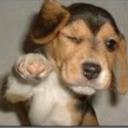Yahoo Answers is shutting down on 4 May 2021 (Eastern Time) and the Yahoo Answers website is now in read-only mode. There will be no changes to other Yahoo properties or services, or your Yahoo account. You can find more information about the Yahoo Answers shutdown and how to download your data on this help page.
when you have two locomotives hauling a train, what is the correct terminology for the two loco's?
ie:the front loco would be the 'leading',
8 Answers
- Anonymous8 years agoFavourite answer
Samurai has the correct answer, that is not "double heading" unless there is a crew in each locomotive, such as they had to do back in the steam engine days or with manned helper sets.
It is multiple unit operation you are talking about and the lead locomotive is usually referred to simply as the leader or the controlling locomotive.
Anything else would be the 2nd unit, 3rd unit, etc or simply a trailing locomotive.
Source(s): RR engineer - ?Lv 68 years ago
If we're talking about steam locomotives (or diesel or electric not working in 'multiple') then it's usually 'double (or 'treble')-heading'. However, an alternative term is 'piloting', where a second locomotive is added to assist on heavy grades etc. The older railway companies had varying policies as to whether the 'pilot' led, or was coupled behind the 'train' locomotive.
Diesel and electric locomotives have multiple-unit control, enabling several to be coupled together and controlled from the leading cab. Where two are more locomotives are used to haul a train, they are generally said to be working 'in multiple' here in the UK.
As a point of interest, the old Southern Region of BR used a multiple-unit system that enabled diesel locomotives of class 33, and class 73 electro-diesels to operate 'in multiple' with the BR standard electric mutiple-unit trains ('1957' and '1963' stock), even to the extent of operating the diesel locomotive from the EMU. In the 1960s, a number of runs were made with an emu leading a class 33 and four vacuum-braked carriages, the equipment on the loco enabling the air brake operation on the emu to operate the vacuum brake on the loose carriages.
Source(s): Retired UK Train Driver, lifetime of interest - Samurai HogheadLv 78 years ago
It helps to understand the railroad definition. In North America, an 'engine' is defined as: "A unit propelled by any form of energy, or a combination of such units operated from a single control, used in train or yard service," if memory serves. That's gotta be pretty close. Either way this info will help clear things up. When speaking of an "engine" that is the diesel power plant, the proper term is "prime mover." It helps reduce confusion, and confusion around the railroad can be fatal.
So, two or more units together is a "Multiple Unit Consist." Commonly referred to as "MU."
Double headed is not the same as MU-ing locomotives. In double heading, the lead locomotive is not MUed with the other head end locomotives, with a separate crew. Each of the two engines of however many units is operated independently. This applied to steam, of course, where the term 'double heading' was coined.
.
- 8 years ago
If you have more then one locomotive and they are knuckled with the air hoses connected they are called a Consist. It is very important to identify which locomotive is the Controlling locomotive when you need to Blue Flag the track. If they are knuckled but not connected by air hose then they are all controlling locomotive and each one needs to be blue flagged.
More then one locomotive is usually called a Consist.
Source(s): RR Employee - Hairy JimLv 68 years ago
If all the Locos are at the front, it's double heading. If there's a big hill, and there's an extra Loco at the back to help it up, that's called a "Banker"
Double Header
http://www.youtube.com/watch?v=dFFS1GhM5aU (I was on this, an excellent day out)
Banker
http://www.youtube.com/watch?v=p9XMiOqNdsc
Filmed on the Lickey incline, the steepest grade on the UK Mainline Network @ 1 in 37.7
- Anonymous8 years ago
no idea but what about two tuttues



